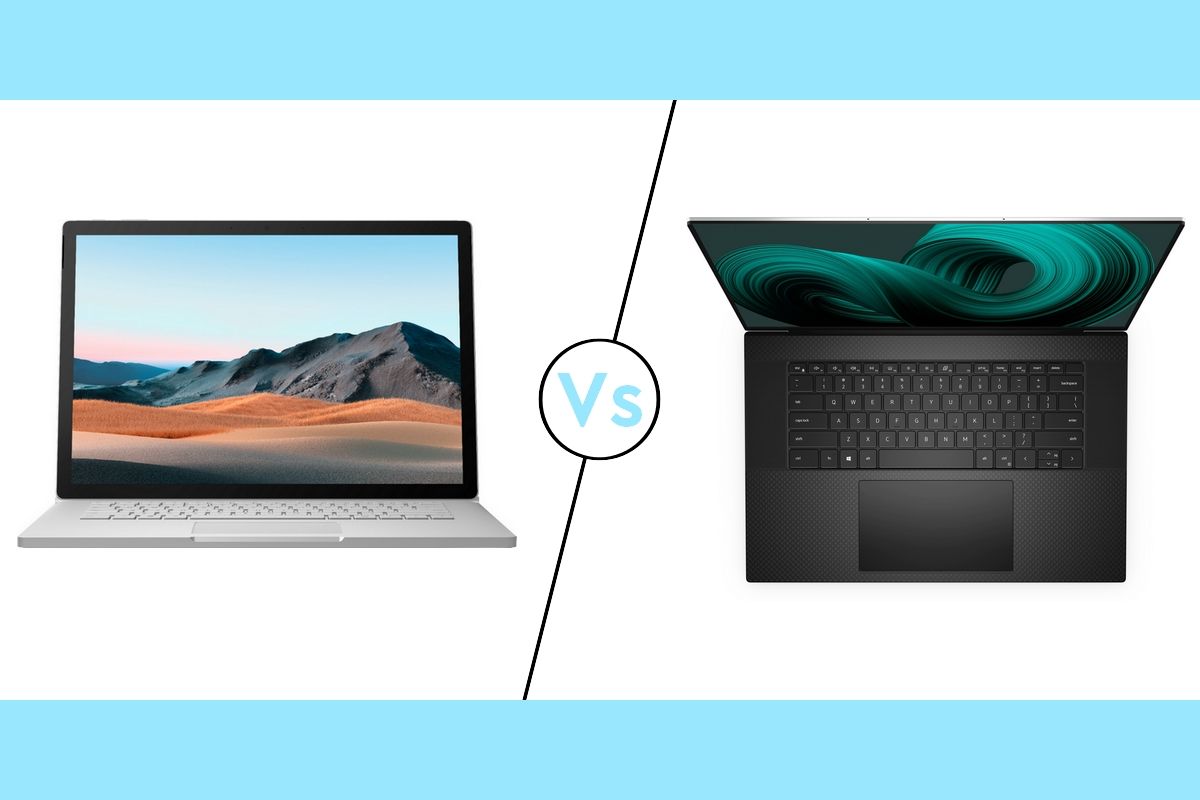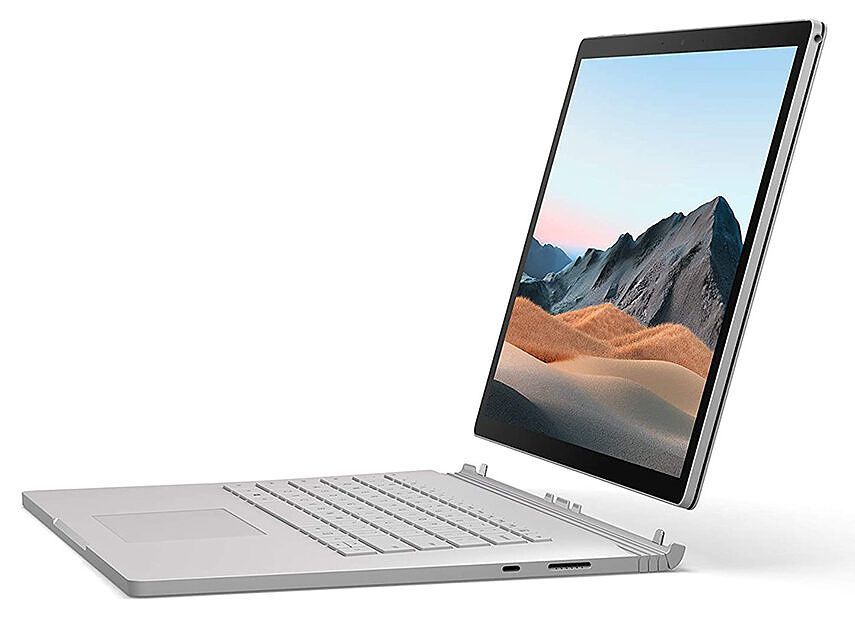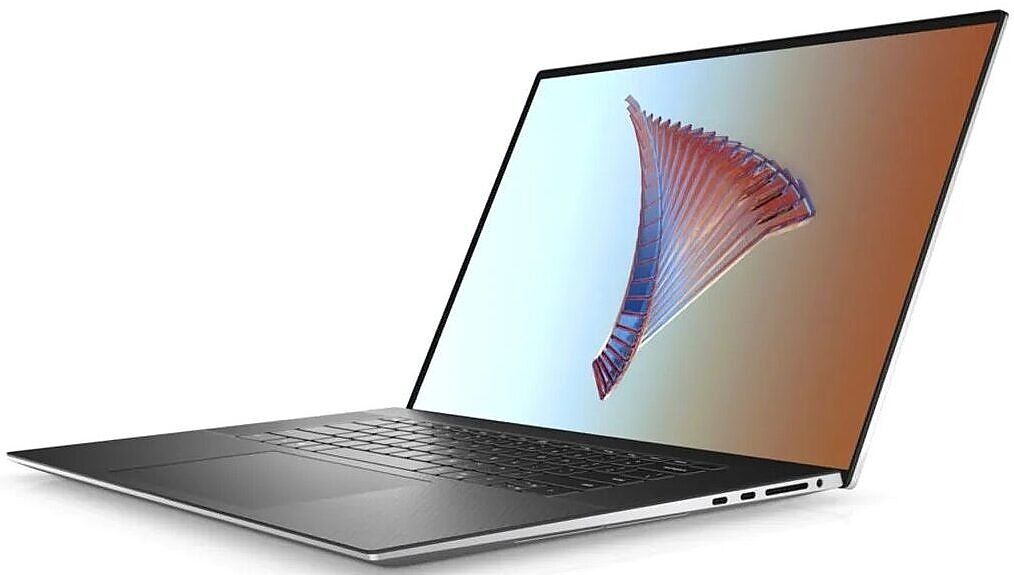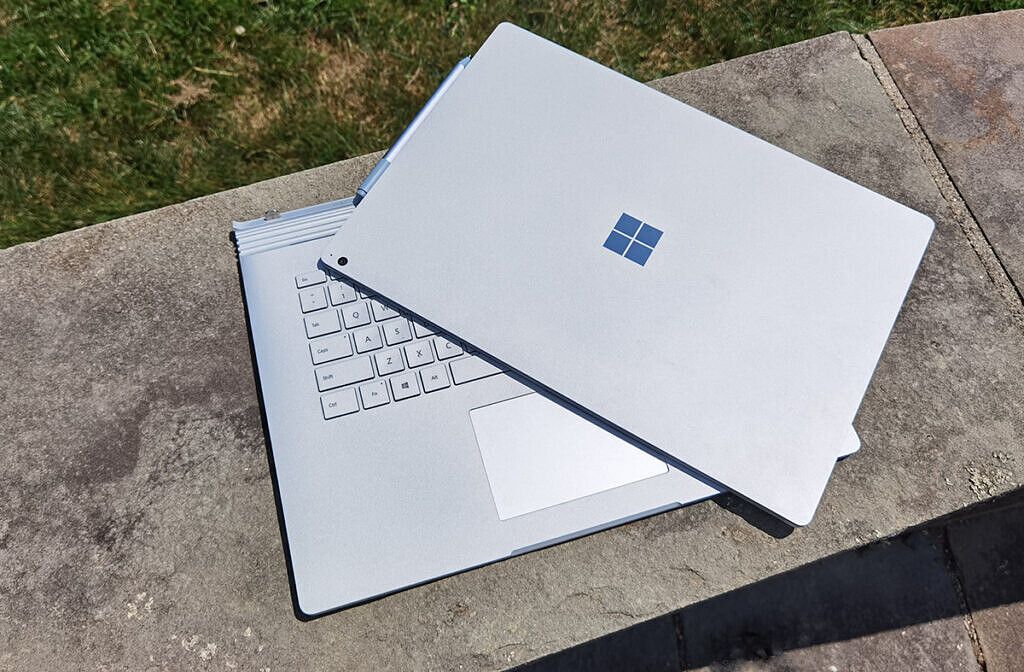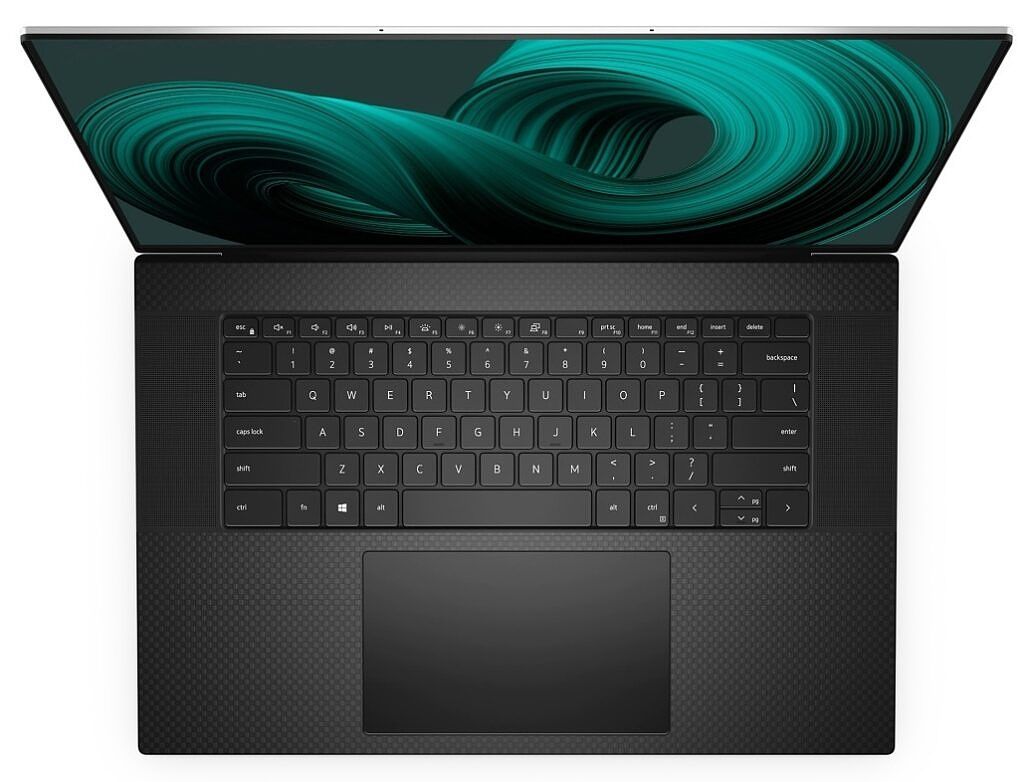Buying a new laptop can be a difficult decision. With the wide variety of great laptops you can buy today, it can sometimes feel like there's too much choice. That's obviously for the better though, since you can find something that suits you just right. If you're on the hunt for a new laptop to buy, two models you may find are the Dell XPS 17 and the Surface Book 3. Both of these laptops are geared towards creative professionals, but that doesn't mean they're all that similar.
These two are radically different laptops in many ways, so choosing between the two should actually be relatively simple. As tends to be the case, the choice you make depends on what you need. But the differences are stark, so you should be able to make a decision fairly easily. Of course, we're here to help, so we'll be comparing the Dell XPS 17 to the Surface Book 3 in a few key areas.
Specs
As usual, we'll start with a simple look at the spec sheet of these two machines. Some big differences will jump out at you right away, but we'll talk about them more afterward.
|
Dell XPS 17 |
Surface Book 3 |
|
|---|---|---|
|
Processor |
|
|
|
Graphics |
|
|
|
RAM |
|
|
|
Storage |
|
|
|
Display |
|
|
|
Audio |
|
|
|
Webcam |
|
|
|
Biometric authentication |
|
|
|
Battery |
|
|
|
Ports |
|
|
|
Connectivity |
|
|
|
Colors |
|
|
|
Size (WxDxH) |
14.74 x 9.76 x 0.77 in (374.45 x 248.05 x 19.05 mm) |
|
|
Weight |
4.87 lbs (2.21 kg) (non-touch), 5.34 lbs (2.42 kg) (touch) |
|
|
Starting price |
$1,599.99 |
$1,599.99 |
Design: The Surface Book 3 has a detachable screen
While both the Dell XPS 17 and the Surface Book 3 can be used as traditional laptops, these two have wildly different designs. That starts with the Dell XPS 17 being just a clamshell laptop, while the Surface Book 3 is a detachable. With the Surface Book 3, you can separate the screen from the keyboard base and use the screen as a tablet. You can also reattach the screen backwards if you want to use it to watch a movie, for example. Most of the components of the Surface Book 3 are in the display portion, though a bigger battery and the NVIDIA GPU are in the keyboard base. That makes the Surface Book 3 easily the more flexible of the two.
The Surface Book 3 is also significantly lighter, and thus, more portable. The Dell XPS 17 starts at 4.87 lbs, and that's without the option for a touchscreen. Plus, this is the base weight, without a dedicated GPU. The 15 inch Surface Book 3 weighs 4.2 lbs, but that already includes touch, an NVIDIA GPU, and a powerful configuration overall. This is partly thanks to its smaller size, but also thanks to the use of a magnesium alloy casing, as opposed to Dell's aluminum build.
The Dell XPS 17 has an advantage in terms of ports, though. For starters, it's using Thunderbolt 4 ports, which give you 40Gbps of bandwidth to connect peripherals and external displays. Microsoft has adamantly refused to use Thunderbolt in its products, and instead uses the Surface Connect port, which is magnetic. However, the company isn't very transparent with the specs on this port, so it's hard to compare it to Thunderbolt.
With that said, the company does say it support dual 4K displays at 60Hz on the Surface Book 3 (using a Surface Dock 2), so you're still getting a solid amount of bandwidth. Another advantage for the Dell XPS 17 is it includes an adapter for HDMI 2.0, so you can more easily connect an external display.
Microsoft has adamantly refused to use Thunderbolt in its products, and instead uses the Surface Connect port, which is magnetic.
Both laptops also come with Windows Hello facial recognition, though the Dell XPS 17 adds a fingerprint sensor as well. While I personally see no reason to use a fingerprint sensor when you have facial recognition, it's nice to have the option.
Performance: The Dell XPS 17 is far more powerful than the Surface
What the Dell XPS 17 lacks in versatility or portability, it more than makes up for with its significantly more powerful hardware. As we've said before, these are two completely separate categories of devices. The Dell XPS 17 packs 11th-generation 45W Intel Core processors, which are a far cry from the 10th-generation 15W processors inside the Surface Book 3. The lower power processors on the Surface make it unavoidable that the performance isn't as good.
Unfortunately, GeekBench isn't providing an average score for the Intel Core i7-1065G7, but even if we take one of the best scores we could find for the Surface Book 3, it's not very close.
|
Main Header 1 |
Surface Book 3 (Intel Core i7-1065G7) |
Intel Core i5-11400H (average) |
Intel Core i7-11800H (average) |
|---|---|---|---|
|
GeekBench score (single-core/multi-core) |
1315 / 4554 |
1403 / 6028 |
1502 / 8152 |
The Dell XPS 17 grows its advantages when we take into consideration the graphics card. This laptop packs up to a 70W NVIDIA GeForce RTX 3060 GPU, which is a very powerful piece of hardware. The Surface Book 3, on the other hand, comes with up to an NVIDIA GeForce GTX 1660 Ti with Max-Q design. This is still a fairly powerful GPU to be clear, but the RTX 3060 is significantly better. For businesses, you do get the option for NVIDIA Quadro RTX 3000 GPU, but that's not radically more powerful.
It's worth pointing out here that the Surface Book 3 is due for a refresh. It's using last-generation Intel processors, and the RTX 30-series GPUs were also not available when the Surface Book 3 was released. For its time, and even today, the Surface Book 3 is still a powerful machine -- more so than any other Surface device -- and you can still use it for creative work or even gaming. It's just nowhere near as powerful as the Dell XPS 17.
Overall, it's clear the Dell XPS 17 is the more powerful machine, but that's to be expected considering its size and weight.
Rounding out the performance specs, the Surface Book 3 can be had with up to 32GB of RAM and 2TB of SSD storage, while the Dell XPS 17 can double both of those. Overall, it's clear the Dell XPS 17 is the more powerful machine, but that's to be expected considering its size and weight.
Dell XPS 17 vs Surface Book 3: Display
Both of these laptops can offer fantastic display experiences, but they're still fairly different. The Surface Book 3 has a 3:2 aspect ratio, while the Dell XPS 17 uses 16:10. Both of these are taller than the traditional 16:9, and thus, they tend to benefit productivity. Everyone has a different sweet spot, but we have been seeing more laptops use 3:2 aspect ratios recently, so it may be preferable.
There's also the matter of size, with the Surface Book 3 giving you two options if you want something more compact, while the XPS 17 gives you the most screen real estate.
In terms of the display sharpness and quality, these two can go somewhat toe-to-toe, but you have to pay extra on the Dell XPS 17. The Surface Book only offers one resolution option for each display size. You get 3000 x 2000 resolution on the 13.5 inch model, or 3240 x 2160 on the 15 inch. The Dell XPS 17, on the other hand, starts with just a Full HD display (1920 x 1200), on top of it being larger. To get a sharper image, you need to spend an extra $400 for the 4K Ultra HD+ option (3840 x 2400). With that configuration, both laptops have similar pixel density, with the XPS 17 being slightly sharper.
As for sound, both of these laptops have user-facing stereo speakers, which means sound comes directly towards you. This should give you louder and higher-quality sound. The Dell XPS 17 is better though, since it has a quad-speaker system with two woofers and two tweeters. The Surface Book 3 uses just two speakers, so it's not quite as good.
One last thing worth pointing out here is the webcam quality. Surface devices have some of the best webcams on Windows laptops, and the Surface Book 3 comes with two 1080p cameras. For pictures, the front-facing camera has a 5MP resolution, and the rear-facing camera is 8MP, plus it supports autofocus. The Dell XPS 17 on the other hand, uses a tiny 2.25mm camera that's just 720p. The quality of this webcam is notoriously bad, and so if you want to take video calls often, you're better off with the Surface Book 3.
The bottom line: it's a balancing act
You've probably heard this a lot, but when it comes to choosing the right laptop for you, it's always a matter of weighing what it offers against what you need. In this case, you have to choose whether you value portability or top-of-the-line performance more. The Surface Book 3 is a powerful laptop, no doubt. Intel's 10th-generation processors are still good, and the GeForce GTX 1660 Ti can still handle a lot of gaming and creative workloads just fine.
But they're not the latest and greatest, on top of being low-power components. In exchange for that extra power, you get bells and whistles like a detachable design and a lightweight magnesium build. Plus, you have great quality cameras.
For a student going off to college, or someone who just cares about taking their laptop with them, the Surface Book 3 is the better choice(...)
On the other hand, the Dell XPS 17 is a performance powerhouse, and it makes the trade-offs it needs to make to get there. It's a simple clamshell design, and it's a heavy one at that (by direct comparison, at least). But the performance you get out of it is just far ahead of what the Surface Book 3 can offer. If you're setting up a home office or a mostly stationary work environment, the Dell XPS 17 might be what you need. Especially if you're dealing with complex creative work like 3D designs or video editing. And of course, you can push gaming that much further with it, too. This is one of Dell's best laptops, and there's good reason for that.
For a student going off to college, or someone who just cares about taking their laptop with them, the Surface Book 3 is the better choice, and personally, it's what I would want for my use case. I love the detachable design, and while I mostly work at a desk, it's nice to have something I can take with me if I need to. But even if you agree with that, it's worth considering that a successor to the Surface Book 3 might be on the way soon. It's been over a year since it launched, and some reports have started popping up about a potential Surface Book 4 with a whole new design. Regardless, if you've made your choice, you can buy either one of these laptops using the links below.
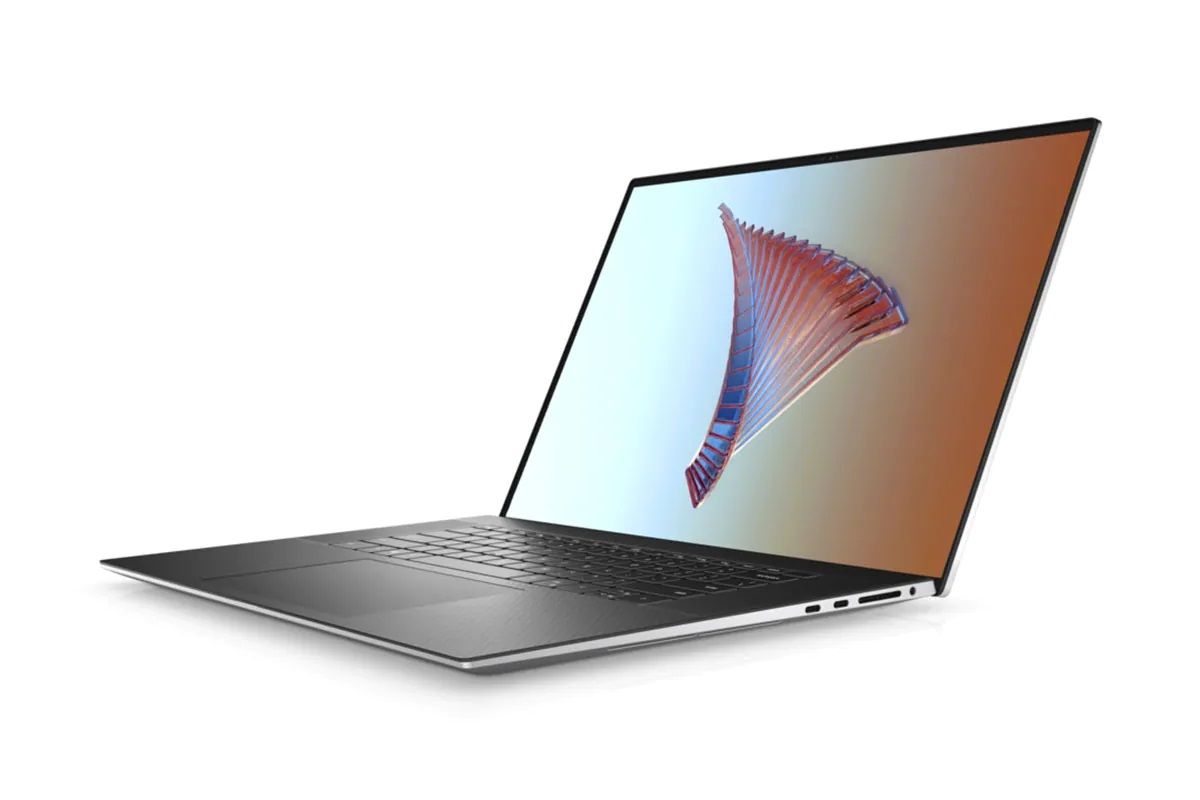
Dell XPS 17
The Dell XPS 17 is a powerful laptop, featuring high-end specs such 11th-generation 45W Intel processors, 64GB of RAM, and 4TB of storage. Plus, you can get it with up to a 70W GeForce RTX 3060 from Nvidia. You can also get it with up to a 4K touchscreen display.
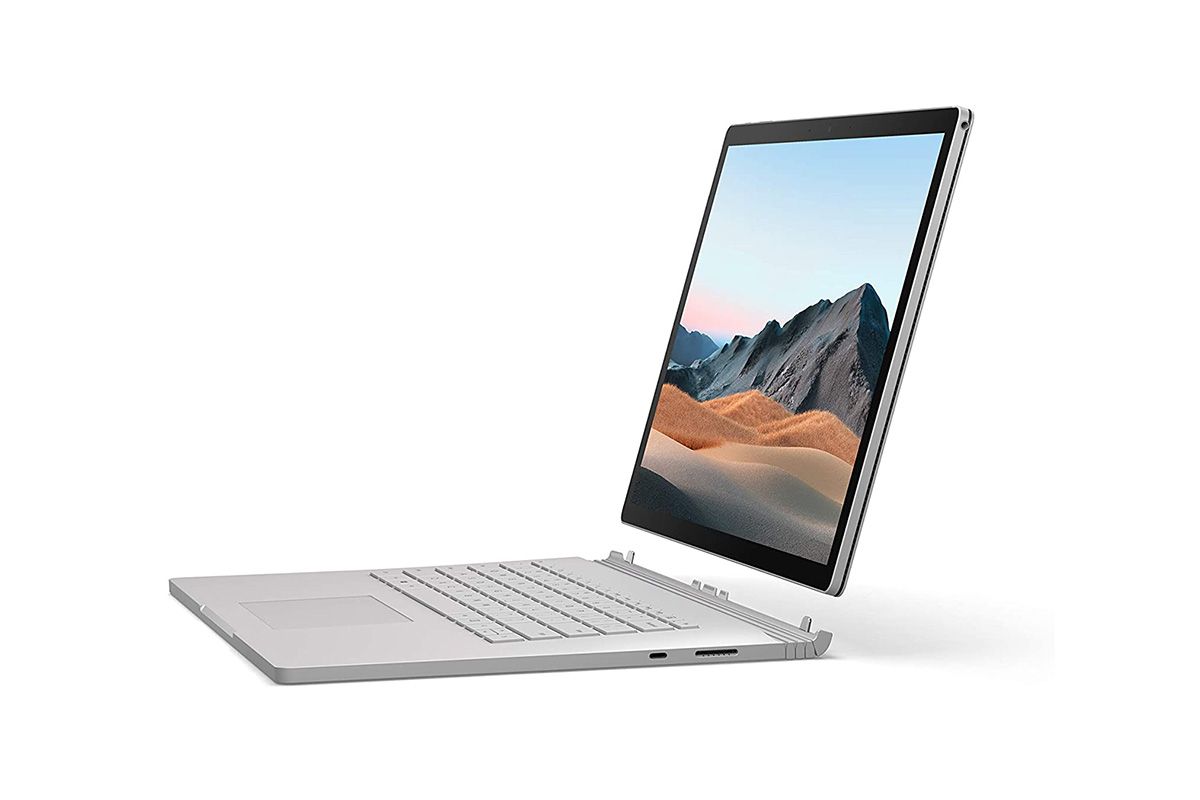
Microsoft Surface Book 3
Packing high-end 10th-gen Intel processors and dedicated NVIDIA graphics, the Surface Book 3 can handle most modern games at playable frame rates as well as creative workloads. You can remove the screen from the keyboard and use it as a tablet, and it has the same premium design the Surface family is known for.

